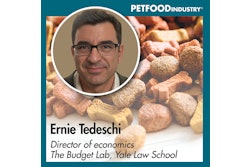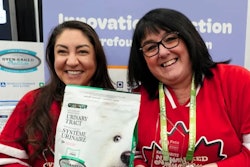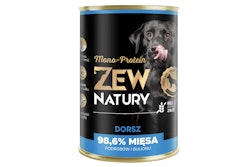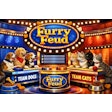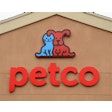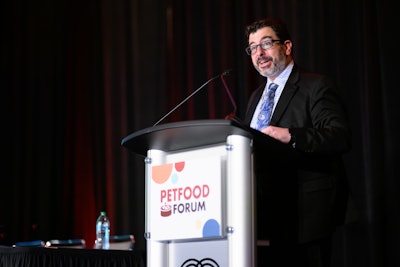
While much of the U.S. economy braces for potential slowdown or even recession, the pet food industry appears to be standing on notably firmer ground. That’s the overarching message from recent economic analyses by Ernie Tedeschi, director of economics, Budget Lab at Yale Law School.
In his analysis, Tedeschi scrutinized consumer spending patterns, tariff impacts and category-specific data. Despite rising prices and the threat of international trade disputes, pet food remains one of the most stable and recession-resistant sectors in the U.S. consumer market, he said during his opening keynote presentation, Tails in a Time of Headwind: The Consumer Outlook & Pets on April 29 at Petfood Forum 2025 in Kansas City, Missouri, U.S.
Pet spending: A six-decade growth story
Since 1959, inflation-adjusted U.S. household spending on pets — largely pet food and non-veterinary products — has grown from $77 per year to over $700 by 2019 and surged another $200 during the pandemic. This growth has outpaced income gains over time, classifying pet spending as a “luxury good” in economic terms: as Americans get richer, they tend to spend more proportionally on their pets, noted Tedeschi.
“This upward trend hasn’t faltered significantly, even during recessions,” he said. “In fact, during recent economic downturns, pet spending as a share of income often increased, suggesting consumers deprioritize cutting back in this area even as they tighten budgets elsewhere.”
As of early 2025, annualized pet spending is tracking at $117 billion, with pet ownership also climbing — from 56% of U.S. households in 1988 to 66% in 2024.
Pet food’s acyclical advantage
One of the most striking findings from Tedeschi’s economic modeling is pet food’s categorization as “acyclical” — meaning its demand remains relatively steady regardless of macroeconomic conditions. Among 180 consumer spending categories, non-veterinary pet products showed minimal correlation with the business cycle, right alongside essentials like eggs. In contrast, veterinary care is highly procyclical, with demand dropping off quickly in recessions.
“This reflects the emotional commitment pet owners feel,” said the economist leading the Tedeschi. “Families are willing to cut back on formal care when times are tough, but they continue feeding and caring for pets at home.”
Tariff impact: Limited for U.S. consumers, riskier for exporters
This year’s sweeping tariff increases — particularly those targeting China — are expected to shave a full percentage point off U.S. GDP growth and raise average consumer prices by 3%. Pet food, however, stands out as relatively insulated from these effects, at least domestically.
Only 3% to 4% of U.S. pet food consumption relies on imports, most of which come from countries like Thailand, Canada, and Mexico — many of which are either subject to lower tariffs or exempt under trade agreements like USMCA, noted Tedeschi. As a result, the average price increase expected for pet food due to tariffs is estimated to be between just 0.33% and 0.75%, a negligible rise unlikely to spur widespread consumer backlash.
That said, the picture isn’t as rosy for U.S. pet food exporters. The U.S. maintains a trade surplus in pet food, exporting roughly $2.5 billion annually.
“With over half of those exports going to Canada and Mexico — and the remainder to markets that may impose retaliatory tariffs — there’s real risk of eroded competitiveness abroad,” said Tedeschi. “Moreover, tariffs tend to push up the U.S. dollar, further hindering exports by making them more expensive globally.”
Don’t confuse stability with immunity
While the overall spending pie for pet food remains impressively stable, brands must not grow complacent warned Tedeschi. With inflation fatigue still present among consumers, subtle shifts within categories can signal meaningful changes in behavior.
“Pet food may be recession-resistant, but it’s not immune,” Tedeschi said. “We see clear evidence that consumers will trade down from premium to value brands if they feel financial strain. The total spend might stay the same, but the internal mix can shift.”
For producers, this means closely monitoring SKU performance, promotional responsiveness, and channel preference shifts. Are customers looking for more deals? Buying from different retailers? Changing their basket mix? These early indicators of stress should inform both marketing and supply chain decisions, he noted.
A realistic outlook for 2025
So, what’s ahead for the pet food industry in 2025? Despite slowing growth, the broader U.S. economy is not expected to enter a formal recession — at least not yet, said Tedeschi.
“Tariffs and policy uncertainty may dampen consumer confidence and chill investment in the short term, but pet food is likely to maintain its relatively stable performance,” he said.
Still, businesses should recalibrate expectations. “The explosive growth of the early pandemic years was an anomaly, not a new normal,” said Tedeschi. “Year-over-year gains are likely to be more modest moving forward, even if baseline spending remains high.”
5 takeaways for pet food businesses
Tedeschi offered these actionable takeaways to remain focused during these uncertain times:
- Follow the data, not the panic. Resist reacting to market volatility without confirming trends through reliable metrics.
- Know your customer. Watch for early signs of trading down and be ready to adjust offerings to retain loyalty.
- Be honest about pricing strategy. Consumers are still sensitive post-pandemic, and unjustified price hikes can backfire.
- Prepare for export volatility. Monitor evolving tariff policies and currency trends, especially for exports beyond North America.
- Focus on portfolio resilience. With pet food holding steady, optimizing internal product mix is more critical than chasing overall volume growth.
“While 2025 will present its share of challenges, the pet food industry is poised to remain one of the most resilient sectors in the consumer landscape, so long as brands stay agile and informed,” concluded Tedeschi.
Ernie Tedeschi is a rare macroeconomist with private sector, government and academic experience. He is currently the director of economics at the Budget Lab at Yale Law School and is also a visiting fellow at the Psaros Center for Financial Markets and Policy at Georgetown University. Until March 2024, Tedeschi was the chief economist at the White House Council of Economic Advisers (CEA), where among other things he briefed President Biden on incoming economic data.


